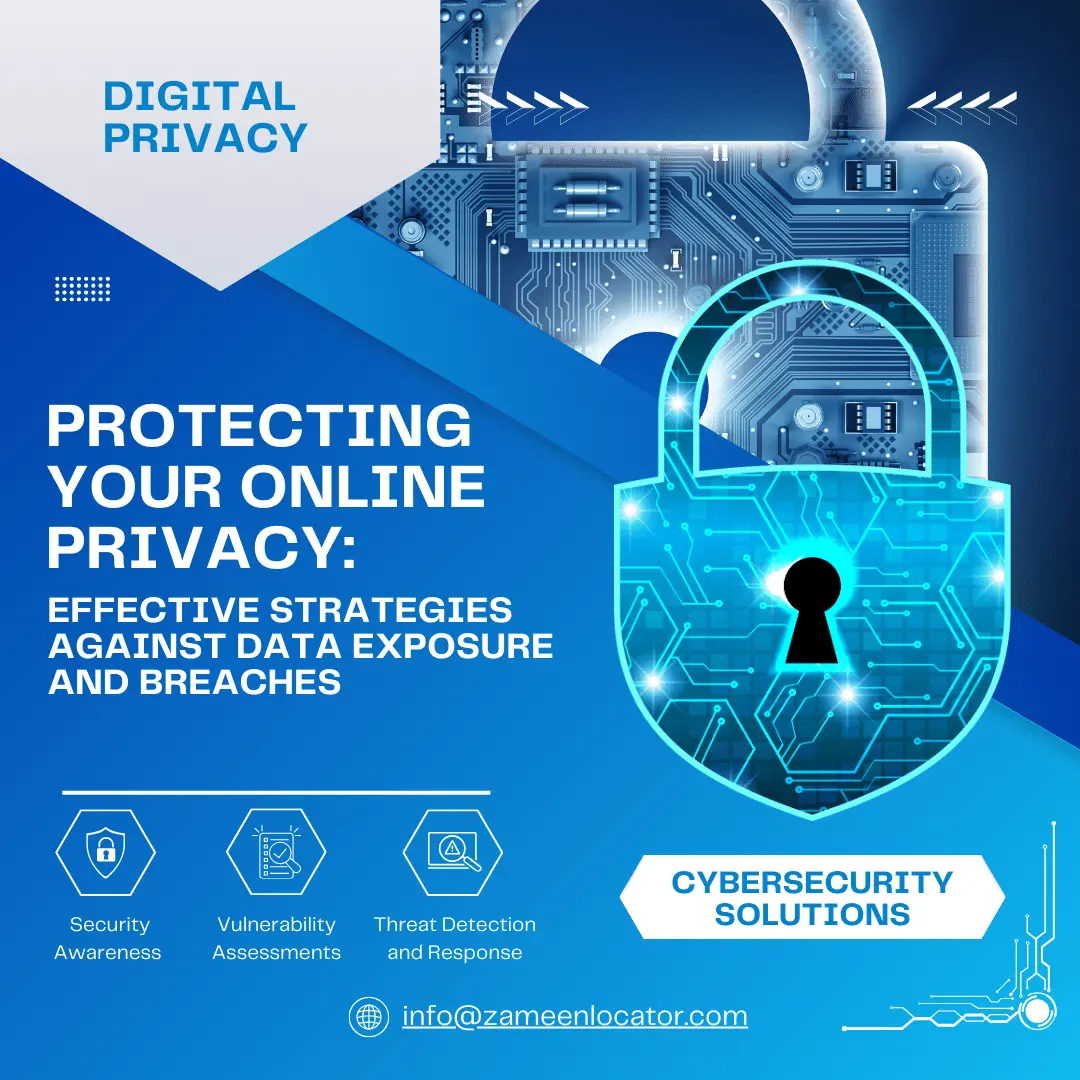
Protecting Your Online Privacy: Effective Strategies Against Data Exposure and Breaches
Introduction:
- In our digitally driven world, where convenience is often with technology, The protection of our data has become more crucial than ever. With every online interaction, we leave behind a trail of information that can be vulnerable to exploitation by malicious actors. From social media platforms to online shopping websites, our digital footprint is extensive, raising concerns about data privacy and security.
- The prevalence of data breaches serves as a stark reminder of the importance of safeguarding our digital privacy. Whether it's sensitive financial information or personal communications, the repercussions of a breach can be far-reaching and devastating. However, by implementing proactive measures and adopting best practices, individuals can significantly reduce the risks associated with data exposure and breaches.
Understanding the Risks
- Before delving into preventive measures, it's essential to grasp the various risks associated with digital privacy:
- Identity Theft:
- Personal information such as social security numbers, addresses, and financial details can be exploited by cybercriminals to commit identity theft, leading to loss and reputational damage.
- Data Breaches:
- Unauthorized access to databases containing sensitive information can result in data breaches, exposing vast amounts of personal and confidential data to hackers.
- Surveillance and Tracking:
- Our online activities are often monitored by companies for targeted advertising purposes, raising concerns about surveillance and the misuse of personal data without consent.
- Phishing Attacks:
- Cybercriminals employ phishing tactics to trick individuals into sensitive information such as login credentials or financial details, posing a significant threat to digital privacy.
Tips to Enhance Digital Privacy:
- To mitigate the risks of data exposure and breaches, individuals can adopt the following strategies:
- Use Strong, Unique Passwords:
- Utilize complex passwords for online accounts and avoid using the same password across multiple platforms. Consider employing a reputable password manager to secure store-managed passwords.
- Enable Two-Factor Authentication (2FA):
- Enable 2FA wherever possible to add an extra layer of security to your accounts. This additional authentication step helps mitigate the risk of unauthorized access, even if your password is compromised.
- Regularly Update Software and Applications:
- Keep your operating system software and applications with the latest security patches and updates that may contain vulnerabilities that be exploited by cyber attackers.
- Be Cautious of Suspicious Emails and Links:
- Exercise caution when interacting with emails from unknown senders or clicking on suspicious links. Be wary of phishing attempts and verify the authenticity of personal or financial information.
- Review Privacy Settings:
- Regularly review and adjust privacy settings on social media platforms and online services to control the amount of information shared with third parties. Limit the visibility of personal data to ensure it is only accessible to intended recipients.
- Encrypt Data:
- Utilize encryption tools and services to encrypt sensitive data in transit and at rest. Encryption converts data into an unreadable format, making it more challenging for unauthorized parties to access or intercept.
- Practice Secure Browsing Habits:
- Use secure, encrypted connections (HTTPS) when browsing the web, especially when accessing sensitive information or making online transactions. Avoid using public Wi-Fi networks for tasks that involve entering personal or financial information.
- Regularly Monitor Financial Statements:
- Monitor bank statements, credit card transactions, and financial accounts regularly for suspicious activity. Report any unauthorized transactions or discrepancies immediately to mitigate potential financial loss.
- Educate Yourself About Online Privacy:
- Stay informed about emerging threats and best practices for maintaining digital privacy. Educate yourself and others about common cybersecurity risks and techniques to protect against potential threats.
- Invest in Cybersecurity Solutions:
- Consider investing in reputable antivirus software, firewalls, and other cybersecurity solutions to protect against malware, ransomware, and other cyber threats.
Conclusion:
- In an era of increasing digitalization, protecting our data and privacy has become paramount. By understanding the risks associated with data exposure and breaches and implementing proactive measures to mitigate these risks, individuals can take control of their digital privacy. Through a combination of secure practices, awareness, and cybersecurity solutions, we can safeguard our personal information and reduce the likelihood of falling victim to cyber threats. As guardians of our digital identities, let us prioritize privacy and security in our online interactions to navigate the digital landscape safely and responsibly.





